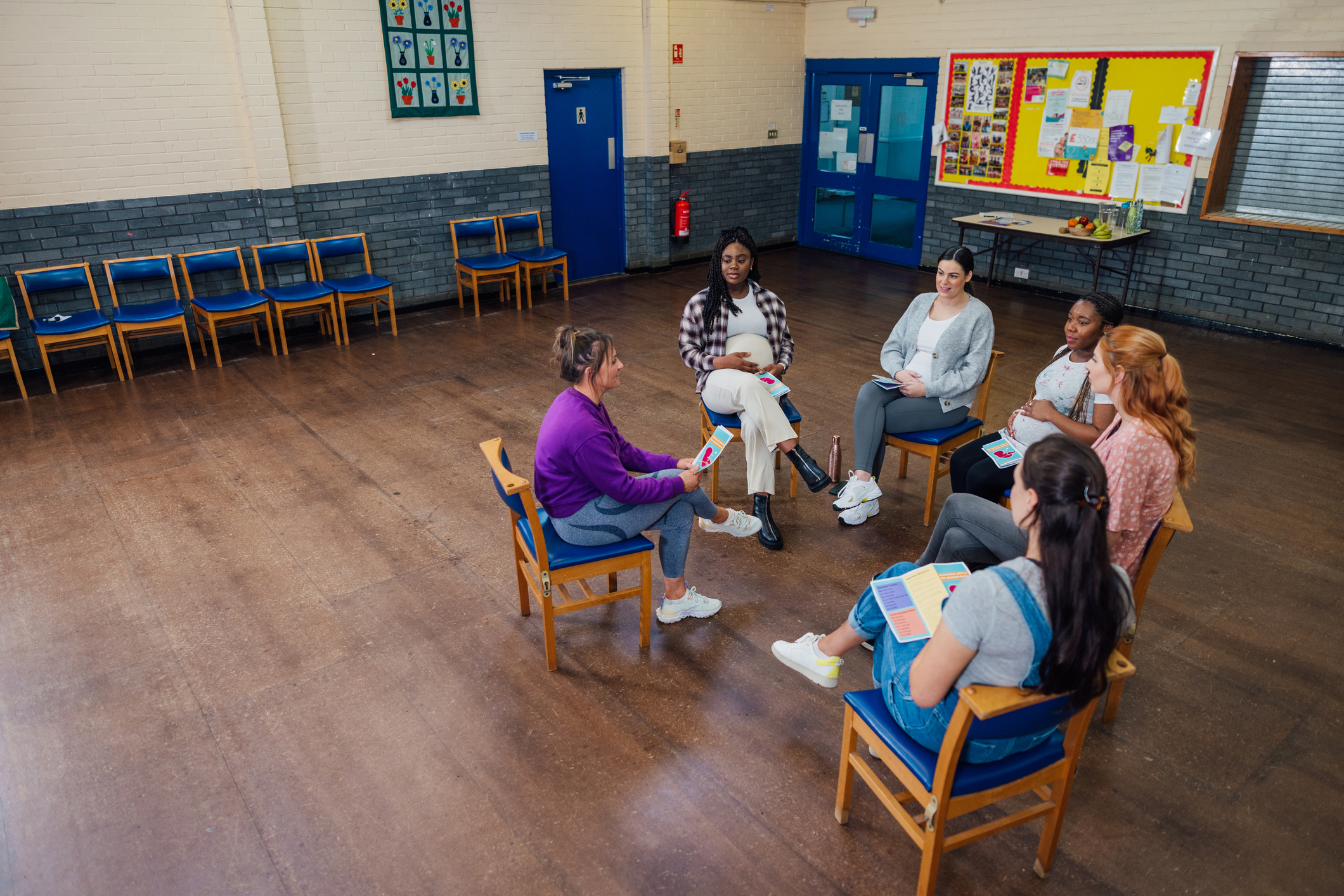Creating a positive classroom environment and promoting positive behaviour are essential aspects of effective classroom management. As educators, it is our responsibility to establish an atmosphere where students feel safe, engaged, and motivated to learn. By implementing the right strategies, we can foster a conducive learning environment and ensure that students thrive academically and socially.
In this blog post, we will explore the fundamentals of classroom management and the importance of promoting positive behaviour. We will delve into the key elements of a positive classroom, discuss various management techniques, and provide practical steps for creating a positive environment. Additionally, we will explore methods for encouraging positive behaviour among students and address how to handle negative behaviour effectively.
Understanding the basics of classroom management is crucial for educators to establish control and create an atmosphere conducive to learning. By implementing effective strategies, teachers can minimize disruptions, enhance student engagement, and optimize learning outcomes. We will discuss the importance of identifying the need for management strategies and explore different techniques that can be applied in the classroom.
Promoting positive behaviour among students is another vital aspect of effective classroom management. By fostering a positive environment, we can encourage students to exhibit respectful and responsible behaviour. We will delve into the significance of promoting positive behaviour, explore various methods for encouraging it, and discuss strategies for addressing negative behaviour when it arises.
Evaluating the effectiveness of our classroom management strategies is essential to ensure continuous improvement. We will explore methods for monitoring behavioural changes, gathering feedback from students, and making necessary adjustments to our approach.
Join us on this journey as we explore effective classroom management strategies and discover how promoting positive behaviour can transform your classroom into a thriving learning environment. Together, let’s create a space where students feel empowered, engaged, and motivated to reach their full potential.
Understanding the Basics: Classroom Management and Positive Behaviour
Effective classroom management is the foundation for creating a positive learning environment. It involves a set of strategies and techniques that teachers use to establish order, engage students, and promote positive behaviour. By understanding the basics of classroom management, educators can effectively navigate challenges and create an atmosphere conducive to learning.
What is Classroom Management?
Classroom management refers to the processes and strategies employed by teachers to establish and maintain a productive learning environment. It encompasses a range of techniques, including setting expectations, establishing routines, managing student behaviour, and facilitating effective communication.
The Importance of Classroom Management
Effective classroom management is crucial for several reasons. Firstly, it sets the tone for the learning environment, ensuring that students feel safe, respected, and valued. A well-managed classroom promotes a positive atmosphere where students can focus, participate, and engage in meaningful learning experiences.
Additionally, classroom management allows teachers to optimise instructional time. By minimizing disruptions and maintaining order, educators can maximize teaching and learning opportunities. It also enables teachers to address individual student needs and provide differentiated instruction effectively.
The Role of Positive Behavior
Positive behaviour is a key component of effective classroom management. When students exhibit positive behaviour, they are more likely to engage in learning, cooperate with their peers, and contribute to a positive classroom environment. Positive behaviour includes traits such as respect, responsibility, active participation, and empathy.
Promoting positive behaviour helps foster a sense of community within the classroom and encourages students to take ownership of their learning. When students feel valued and supported, they are more motivated to succeed academically and develop essential social skills.
The Link Between Classroom Management and Academic Success
Research has consistently shown that effective classroom management practices contribute to improved academic outcomes. When students are in a well-managed classroom, they experience fewer disruptions, leading to increased focus and engagement. This, in turn, enhances their ability to absorb and retain information, resulting in higher academic achievement.
Moreover, positive behaviour and a supportive classroom environment promote a sense of belonging and emotional well-being, which are essential for optimal learning. Students who feel secure and valued are more likely to take risks, ask questions, and actively participate in class discussions, leading to deeper learning experiences.
Collaborating with Students
Effective classroom management involves collaboration between teachers and students. By involving students in the decision-making process and establishing clear expectations, educators empower students to take ownership of their behaviour and learning. This collaborative approach promotes a culture of mutual respect, responsibility, and accountability.
In the next section, we will explore the key elements of a positive classroom environment and discuss why it is crucial for fostering a positive learning experience.
Building a Positive Classroom Environment
Creating a positive classroom environment is essential for fostering a supportive and engaging learning experience. When students feel safe, respected, and valued, they are more likely to actively participate, take academic risks, and develop positive relationships with their peers. In this section, we will explore why a positive environment is crucial, discuss the essential elements of a positive classroom, and provide practical steps for creating such an environment.
Why a Positive Environment is Crucial
A positive classroom environment is vital for several reasons. Firstly, it promotes a sense of belonging and emotional well-being among students. When students feel accepted and valued, they are more likely to take academic risks, express their opinions, and engage in collaborative learning activities.
Additionally, a positive environment enhances student motivation and engagement. When students feel supported and encouraged, they are more likely to be actively involved in the learning process and pursue their academic goals with enthusiasm. This, in turn, leads to improved academic achievement and a more positive attitude towards learning.
Furthermore, a positive classroom environment sets the stage for effective classroom management. When students are engaged and respectful, disruptions are minimized, and teachers can focus on delivering quality instruction without unnecessary interruptions.
Essential Elements of a Positive Classroom
To create a positive classroom environment, several essential elements should be considered:
- Positive Relationships: Building positive relationships between students and teachers, as well as among peers, is crucial. Teachers can foster positive relationships by showing genuine interest in students’ lives, providing support and encouragement, and promoting a culture of respect and empathy.
- Clear Expectations and Rules: Communicating expectations and establishing classroom rules help students understand what is expected of them. This clarity promotes a sense of structure and consistency, reducing confusion and promoting positive behaviour.
- Effective Communication: Open and effective communication is key to a positive classroom environment. Teachers should encourage students to express their thoughts and concerns, actively listen to their input, and provide constructive feedback. Clear and respectful communication helps create a sense of trust and builds positive relationships.
- Inclusive Practices: Embracing diversity and implementing inclusive practices is essential for creating a positive classroom environment. Teachers should ensure that all students feel valued, respected, and included, regardless of their background, abilities, or identities.
- Engaging Instructional Strategies: Using engaging instructional strategies promotes active student participation and enhances motivation. Incorporating hands-on activities, group work, technology, and real-world connections can make learning more meaningful and enjoyable for students.
Steps to Create a Positive Classroom Environment
Creating a positive classroom environment involves intentional efforts from educators. Here are practical steps that teachers can take to establish a positive learning environment:
- Get to Know Your Students: Take the time to get to know your students individually. Learn about their interests, strengths, and challenges. This knowledge will help you tailor your instruction and build stronger relationships.
- Establish Classroom Expectations: Communicate your expectations and establish classroom rules together with your students. Involve them in the process to promote ownership and understanding.
- Create a Supportive Physical Environment: Arrange the classroom in a way that promotes collaboration, comfort, and accessibility. Provide a variety of learning materials and resources that cater to different learning styles and interests.
- Promote Positive Behavior: Implement a system for recognizing and reinforcing positive behaviour. This could include verbal praise, reward systems, or class-wide incentives. Encourage students to support and celebrate each other’s achievements.
- Address Conflict and Misbehavior: Develop strategies for addressing conflict and misbehaviour promptly and effectively. Use restorative practices that focus on resolving conflicts, repairing relationships, and promoting personal growth.
By following these steps, teachers can cultivate a positive classroom environment that supports student success, enhances engagement, and promotes positive behaviour. In the next section, we will explore effective classroom management strategies that can be implemented to maintain a positive environment.
Implementing Effective Classroom Management Strategies
Implementing effective classroom management strategies is crucial for maintaining a positive learning environment and promoting student engagement. In this section, we will discuss the importance of identifying the need for management strategies, explore various techniques that can be employed in the classroom, and provide practical guidance on applying these strategies effectively.
Identifying the Need for Management Strategies
Recognizing the need for classroom management strategies is the first step towards creating a well-managed classroom. Educators should assess the dynamics of their classroom and identify areas that may require attention. This could include issues such as disruptive behaviour, lack of student engagement, or difficulty in maintaining order during transitions.
By understanding the specific challenges faced in the classroom, teachers can develop targeted strategies to address them effectively. This proactive approach allows educators to be proactive rather than reactive in managing student behaviour and creating a positive learning environment.
Various Classroom Management Techniques
There are numerous classroom management techniques that educators can utilise to establish control, engage students, and promote positive behaviour. Here are some commonly used techniques:
- Establishing Clear Expectations: Communicate expectations for behaviour, participation, and academic performance. Ensure that students understand what is expected of them and the consequences of not meeting these expectations.
- Implementing Routines and Procedures: Establish consistent routines and procedures for various classroom activities, such as morning meetings, transitions, and assignment submissions. Predictable routines help students feel secure and reduce disruptions.
- Utilising Positive Reinforcement: Recognise and reinforce positive behaviour through verbal praise, reward systems, or other incentives. Celebrate students’ achievements and efforts, promoting a positive classroom culture.
- Providing Structured Learning Activities: Engage students through well-structured and meaningful learning activities. Incorporate active learning strategies, group work, and hands-on experiences to enhance student engagement and participation.
- Using Effective Classroom Organisation: Ensure that the physical layout of the classroom supports learning and minimizes distractions. Arrange desks, materials, and resources in a manner that facilitates interaction and accessibility.
- Implementing Cooperative Learning: Encourage collaboration and cooperation among students through group work and cooperative learning strategies. This promotes positive relationships, peer support, and active engagement.
- Using Technology Appropriately: Integrate technology into instruction to enhance engagement and promote interactive learning experiences. Use educational apps, online resources, and multimedia tools to create a dynamic and engaging classroom environment.
Applying Classroom Management Strategies
Implementing classroom management strategies effectively requires planning, consistency, and flexibility. Here are some practical tips for applying these strategies in the classroom:
- Plan Ahead: Develop a comprehensive classroom management plan that aligns with your teaching style, student needs, and learning objectives. Consider the specific strategies you will use and how they will be implemented.
- Communicate Expectations: Communicate the expectations and rules to students. Explain the rationale behind these expectations and ensure that students understand the consequences of their actions.
- Model and Teach Procedures: Explicitly teach and model the routines, procedures, and expectations in the classroom. Provide opportunities for students to practice and reinforce these procedures until they become ingrained habits.
- Establish Consistency: Be consistent in enforcing expectations and consequences. Consistency helps students understand what is acceptable and fosters a sense of fairness in the classroom.
- Monitor and Provide Feedback: Continuously monitor student behaviour and provide timely feedback. Recognise and reinforce positive behaviour, and address any misbehaviour promptly and constructively.
- Reflect and Adjust: Regularly reflect on the effectiveness of your classroom management strategies. Seek feedback from colleagues, students, and self-reflection. Make necessary adjustments to improve the strategies and address emerging challenges.
By implementing a variety of classroom management techniques and consistently applying them, educators can create a well-managed classroom that promotes positive behaviour, enhances engagement, and supports student success. In the next section, we will explore the importance of promoting positive behaviour among students and provide practical methods for doing so.
Promoting Positive Behaviour Among Students
Promoting positive behaviour among students is a key component of effective classroom management. When students exhibit positive behaviour, they contribute to a harmonious learning environment, engage in meaningful learning experiences, and develop essential social skills. In this section, we will discuss the importance of promoting positive behaviour, explore methods for encouraging it, and address how to effectively deal with negative behaviour when it arises.
The Importance of Promoting Positive Behavior
Promoting positive behaviour among students has numerous benefits. Firstly, it creates a positive and inclusive classroom environment where students feel safe, respected, and valued. This positive atmosphere fosters a sense of belonging and encourages students to actively participate in their learning.
Moreover, positive behaviour promotes effective communication and collaboration among students. It enhances teamwork, empathy, and problem-solving skills. Students who exhibit positive behaviour are more likely to develop positive relationships with their peers, leading to a supportive and cooperative learning community.
Promoting positive behaviour also contributes to students’ social-emotional development. It helps them develop self-control, self-discipline, and self-regulation skills. These skills are crucial for their overall well-being and success in both academic and personal settings.
Methods for Encouraging Positive Behavior
There are various methods that educators can employ to encourage positive behaviour among students. Here are some effective strategies:
- Explicit Teaching of Expectations: Communicate the expected behaviours and explicitly teach them to students. Break down the desired behaviours into specific actions and provide examples to ensure understanding.
- Positive Reinforcement: Utilise positive reinforcement techniques to acknowledge and reward students’ positive behaviour. This can include verbal praise, recognition, certificates, or tokens that can be exchanged for privileges or small rewards.
- Classroom Economy: Implement a classroom economy system where students earn rewards or points for positive behaviour and can use them to “purchase” desired items or privileges. This system helps reinforce positive behaviour and teaches financial literacy.
- Peer Recognition: Encourage students to recognize and appreciate their peers’ positive behaviour through peer-to-peer recognition programs. This fosters a sense of community and reinforces positive behaviour within the classroom.
- Social-Emotional Learning (SEL) Programs: Incorporate SEL programs and activities into the curriculum to promote self-awareness, self-management, social awareness, relationship skills, and responsible decision-making.
- Restorative Practices: Implement restorative practices to address and resolve conflicts. These practices focus on repairing relationships, fostering empathy, and promoting personal growth.
Dealing with Negative Behavior
Despite efforts to promote positive behaviour, negative behaviour may still occur in the classroom. Educators need to address negative behaviour effectively to maintain a positive learning environment. Here are some strategies for dealing with negative behaviour:
- Clear Expectations and Consequences: Ensure that students are aware of the expected behaviours and the consequences of negative behaviour. Consistently enforce these expectations and consequences.
- Immediate and Private Intervention: Address negative behaviour promptly and privately, when possible. This approach minimizes disruption and allows for a more focused conversation with the student.
- Restorative Conversations: Engage in restorative conversations with students involved in negative behaviour. This involves discussing the impact of their actions, exploring choices, and finding ways to repair harm and restore positive relationships.
- Individual Behavior Plans: Develop individualized behaviour plans for students who consistently engage in negative behaviour. These plans should outline specific goals, strategies, and support systems to help the student improve their behaviour.
- Collaboration with Support Staff: Seek support from school counsellors, psychologists, or behaviour specialists when necessary. These professionals can provide additional strategies and interventions to address challenging behaviour.
By promoting positive behaviour and effectively addressing negative behaviour, educators can create a classroom environment that fosters respect, cooperation, and a love for learning. In the next section, we will discuss how to evaluate the effectiveness of your classroom management strategies and make necessary adjustments for continuous improvement.
Evaluating the Effectiveness of Your Classroom Management Strategies
Evaluating the effectiveness of classroom management strategies is crucial for continuous improvement and ensuring a positive learning environment. By monitoring behavioural changes, gathering feedback from students, and making necessary adjustments, educators can enhance their classroom management techniques. In this final section, we will explore methods for evaluating the effectiveness of your classroom management strategies and guide making necessary adjustments.
Monitoring Behavioral Changes
One way to evaluate the effectiveness of your classroom management strategies is by monitoring behavioural changes. Here are some methods to consider:
- Observation: Regularly observe student behavior during different classroom activities. Take note of changes in engagement, participation, and adherence to classroom expectations.
- Behavior Tracking: Use behaviour tracking systems to record and analyse student behaviour over time. This could involve using checklists, anecdotal records, or behaviour charts to track specific behaviours or patterns.
- Data Analysis: Analyse behavioural data collected to identify trends, patterns, and areas that need improvement. This analysis can provide valuable insights into the effectiveness of your strategies.
- Reflection Journals: Encourage students to keep reflection journals where they can record their thoughts and feelings about their behaviour and classroom experiences. This can provide valuable feedback on the effectiveness of your strategies from the student’s perspective.
Gathering Feedback from Students
Another valuable approach to evaluating the effectiveness of your classroom management strategies is gathering feedback from your students. Here are some methods to consider:
- Surveys or Questionnaires: Create surveys or questionnaires to gather anonymous feedback from students about their experiences in the classroom. Include questions about their perception of the classroom environment, their understanding of expectations, and their suggestions for improvement.
- Classroom Meetings: Conduct regular classroom meetings where students can openly discuss their thoughts and feelings about the classroom environment and management strategies. Encourage students to share their insights and suggestions for improvement.
- One-on-One Conferences: Schedule one-on-one conferences with individual students to discuss their experiences in the classroom. This provides an opportunity for students to share their concerns, suggestions, and any difficulties they may be facing.
Making Necessary Adjustments
Based on the insights gathered from monitoring behavioural changes and gathering feedback, it is essential to make necessary adjustments to your classroom management strategies. Here are some considerations:
- Reflect on Findings: Reflect on the data collected and the feedback received from students. Analyse the patterns and areas that require improvement.
- Identify Areas for Adjustment: Identify specific areas or strategies that need adjustment based on the data and feedback. This could include modifying rules or expectations, revising routines, or implementing new techniques.
- Seek Professional Development: Attend professional development workshops or seek guidance from experienced educators to learn new strategies and techniques. This can help you expand your toolkit and refine your classroom management approach.
- Implement Changes: Implement the necessary adjustments to your classroom management strategies. Communicate these changes to your students and explain the rationale behind them.
- Monitor and Evaluate: Continuously monitor the impact of the adjustments made. Observe student behaviour, gather feedback, and assess whether the changes have had a positive effect on the classroom environment and student engagement.
By evaluating the effectiveness of your classroom management strategies and making necessary adjustments, you can create an optimal learning environment that promotes positive behaviour and maximizes student success. Remember, classroom management is an ongoing process that requires flexibility, reflection, and a commitment to continuous improvement.
Related posts:
 Meeting the Needs of Every Student: Implementing Trauma-Informed Practices in the Classroom
Meeting the Needs of Every Student: Implementing Trauma-Informed Practices in the Classroom
 Empowering Students’ Voices: Promoting Agency and Resilience in Trauma-Informed Classrooms
Empowering Students’ Voices: Promoting Agency and Resilience in Trauma-Informed Classrooms
 Addressing Behaviour through a Trauma-Informed Lens: Strategies for Cultivating Positive Classroom Culture
Addressing Behaviour through a Trauma-Informed Lens: Strategies for Cultivating Positive Classroom Culture
 Building Trust and Connection: The Role of Relationships in Trauma-Informed Teaching
Building Trust and Connection: The Role of Relationships in Trauma-Informed Teaching



